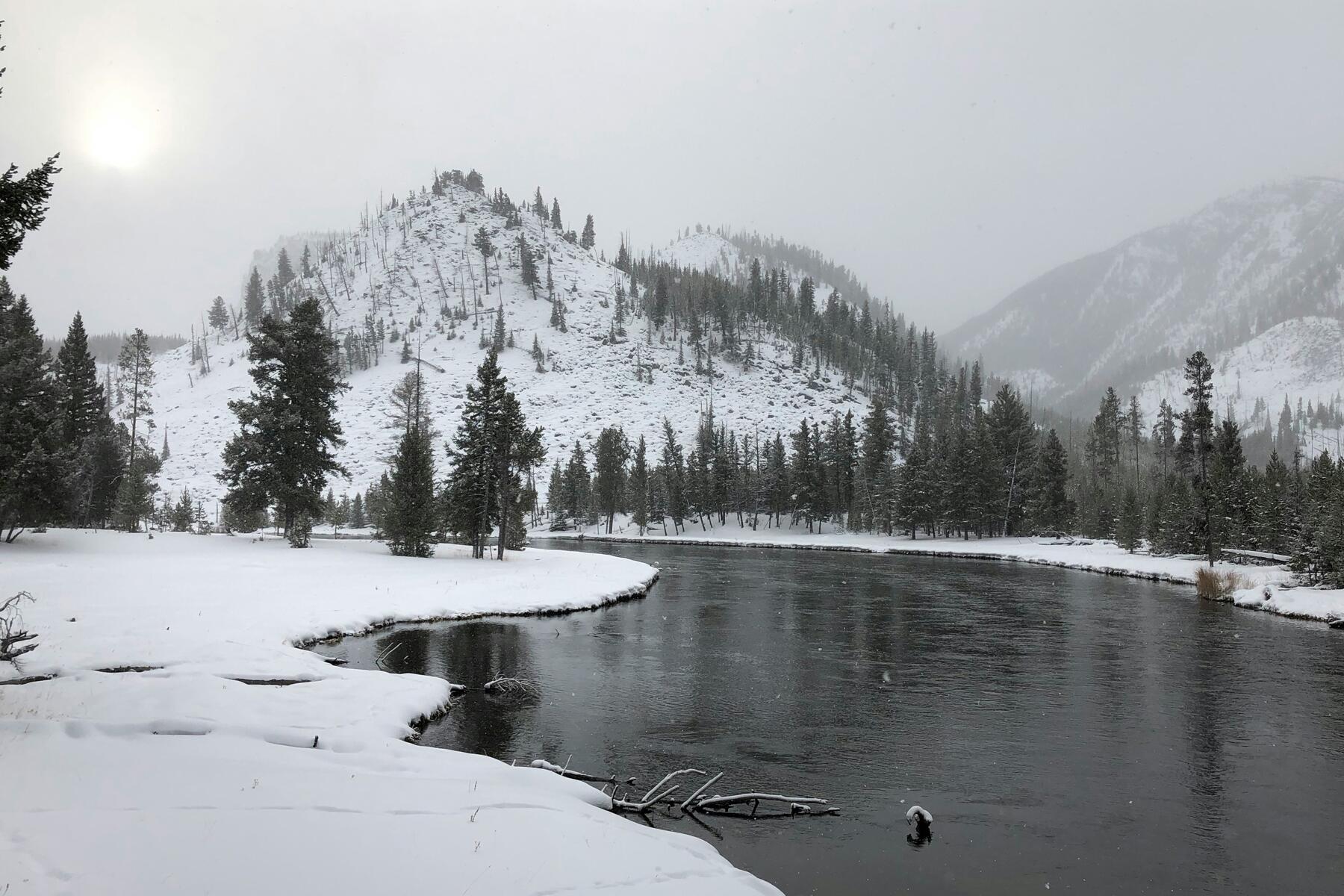Dive deep.
For some, heading “underground” might mean exploring a city’s trendy underground art or music destinations. For others, it might mean heading down into a metro system and zipping around on a train. And for those with a revolutionary bent, the underground could denote a secretive movement fighting against the powers that be. Slip underground to visit some of Europe’s most captivating spelunking splendors, from short subterranean excursions targeting the casual tourist to more challenging treks requiring a decent amount of caving experience and physical stamina to complete. Let the caving adventures begin!
Top Picks for You
Wookey Hole Limestone Caves
WHERE: Somerset, England
If you’d like to wander around a mesmerizing hole on the ground—with plenty of unexpected distractions for the tots (like dinosaur and King Kong statues) on the surface—Somerset’s Wookey Hole Caves have all that your burrowing heart could desire. While human beings have been visiting these caves for 50,000 years, it was only in the early 20th century, after the archaeologist Herbert Balch mapped the area, that tourism took off here. The cave can now be accessed with a general entrance ticket, or the more intense, three-hour Wild Wookey tour, with a Via Ferrata route and a visit to the subterranean sections of the River Axe.
Baredine Jama-Grotta
WHERE: Croatia
Western Croatia’s Baredine Jama-Grotta only opened to the public in the mid-1990s. With caverns chock-full of stalagmites and stalactites, and an underground lake, you’ll need at least 40 minutes to take it all in. The well-maintained (albeit slippery) illuminated walkways make the cave accessible for all ages—as long as no one in your group suffers from acute claustrophobia. Keep an eye out for the nifty little cavefish and salamanders scurrying about, which have evolved in the dark, hence their lack of skin pigmentation or eyesight.
Recommended Fodor’s Video
The Bear’s Cave
WHERE: Romania
In Romania, every day of the week except Monday, the Bear’s Cave, or Pestera Urșilor in Romanian, delights the public with the fossilized history contained within its damp hollows. The four main caverns, situated in the Apuseni Range of the Carpathian Mountains, were discovered in 1975 and contain a trove of ancient (and extinct) cave bear skeletons. Pestera Urșilor makes for a perfect geological pit stop while you hike through the green hills in this picturesque part of Western Romania.
Cuevas del Drach
WHERE: Spain
When you’ve had enough of the sunny beach life in Spain’s Balearic Islands, or need a reprieve from the tourist hordes, head over to the island of Majorca, and visit the Cuevas del Drach for some below-the-surface fun. The infrastructure inside these limestone caverns has been built up over the years, making it a cinch for visitors who’ve just come from the beach, and might not be prepared for a hardcore spelunking adventure, to visit.
With floodlit paths and stairs for steeper sections—not to mention a lovely boat ride on the underground Lake Martel complete with soothing tunes played by a live classical musical quartet—the hour or so it’ll take to explore Cuevas del Drach’s 1,200 meters (almost 4,000 feet) of limestone curiosities just might be one of the comfiest caves experiences you’ll ever happen across.
Eisriesenwelt Ice Cave
WHERE: Austria
During your hike through Austria’s Eisriesenwelt Ice Cave, which is the biggest ice cave on the planet, Robert Matthew Van Winkle’s (aka Vanilla Ice) “Ice Ice Baby” might end up playing through your head on auto-repeat. With 26 miles of icy tunnels, you could be overwhelmed by the scale of this natural wonder, although tourists can only visit the first kilometer, making Eisriesenwelt a bit easier to fit into your schedule. The Eisriesenwelt Cave was carved out over millions of years by the Salzach River, which helped create the imposing ice walls, adding to the figuratively and literally “cool” atmosphere contained within.
Trollkirka Caves
WHERE: Norway
Irrespective if you refer to yourself as a caving, spelunking, or potholing enthusiast, a visit to the Trollkirka (Troll Church) Caves, which in their entirety extend 70 miles, should brighten your day—while literally taking the sun away.
These marble caves, located in Møre og Romsdal, Norway, require preparation, surefootedness, and a fair amount of stamina to explore. You’ll need a headlamp and several hours, depending on your fitness level, to walk through the main corridor. For those unfazed by soaking wet feet as they wade through the underground river, they’ll be rewarded at the end of their journey by a gorgeous waterfall which pours through an opening in the ground into the grotto below.
Grotta di Palazzo
WHERE: Italy
For anyone looking for a superb but pricey meal next to the Adriatic Sea while also laying claim to “exploring” an ancient cave, the Grotta Palazzese restaurant, nestled inside the Grotta di Palazzo (treating the nobility of Italy to lavish banquets since the 1700s) should more than satisfy. With only a few tables set out inside this limestone sea cave, that “wannabe elitist” side of your personality won’t get irked by nettlesome tourists poking about. The restaurant, open from May through October, has a modest dress code in place, so don’t show up in your beach gear. And bring your wallet, as a meal here can cost more than 200 euros per person.
Škocjan Caves
WHERE: Slovenia
If you think Carlsbad Caverns in New Mexico or Arizona’s Grand Canyon are impressive to behold (which they are), get ready to add to your list of notable destinations with Slovenia’s Škocjan Caves. This UNESCO site, referred to by tourist operators as Europe’s “Underground Grand Canyon,” houses an enormous gorge as well as buried sections of the Reka River, which flows along the almost four-mile route, complete with karst spans, subterranean pools, and waterfalls, all of which make Škocjan a must for anyone wanting to journey down into the belly of the earth.
Ogof Ffynnon Ddu
WHERE: Wales, UK
If you can’t pronounce “Ogof Ffynnon Ddu,” which means “Black Spring Cave” in Welsh, you can always opt for the much simpler OFD. Tucked away in the upper reaches of Swansea Valley in Wales, these caves clock in as the deepest in the UK. With passages extending 30 miles in length, and in places, plummeting 1,000 feet below, Ogof Ffynnon Ddu is for veteran spelunkers only. If you number among the caving elite, you’ll have to apply for a permit, which will also give you access to a key to unlock the cave entrance, allowing you to investigate the geological marvels Ogof Ffynnon Ddu (trying saying that 10 times fast) has in store for you.
St. Beatus Caves
WHERE: Switzerland
These Swiss caves, along the shore of Lake Thun, can accommodate the old, young, fit, and less-than-fit alike. Legend tells of how an Irish monk named Beatus forced the nasty dragon residing here to vacate his dank abode and flee into the lake. These days, after hiking up the snaking path to the main entrance, you, and your entire family can explore caverns that reach deep into the heart of the hillside, and travel along an easy to navigate trail through the rocky twists and turns the St. Beatus Caves have carved out over the eons.
The Gouffre Berger
WHERE: France
The Gouffre Berger, discovered in 1953 in the French Alps, was once considered the deepest (3,680 feet deep) cave in the world. And while it relinquished that title long ago, the allure and mystery of this magical and occasionally deadly cave endure to this day.
Needless to say, this isn’t a family-friendly spot, but rather a cave for surefooted spelunkers (permits required). Descending to the bottom and then back out again can take anywhere from half a day to a full day or more. The biggest dangers come from flooding, which has claimed lives in the past. But if the perils don’t scare you, and you know what you’re doing, a day-long journey into the Gouffre Berger—with almost 20 miles of subterranean landscapes to explore—just might be worth the risks, given the exhilarating rewards.
Thrihnukagigur
WHERE: Iceland
Thrihnukagigur, or “Three Peaks Crater,” is a gorgeous, multihued cave lodged inside a dormant volcano in Iceland, not far from the capital of Reykjavik. If you’ve ever wanted to roam inside a magma chamber (where pressurized molten rock collects before being belched out onto the surface), Thrihnukagigur’s colossal magma chamber, which drained out after its last eruption 4,000 years ago, serves up a cornucopia of color brought to life by the mineral deposits left behind in the chamber walls. As the promotional literature boasts, Thrihnukagigur is large enough to hold the Statue of Liberty. With tinted minerals galore, and volcanic chambers worthy of an epic location featured in Tolkien’s Lord of the Rings (imagine the subterranean realms of the Dwarves), Thrihnukagigur will crank your geological curiosity into overdrive.
The Blue Grotto
WHERE: Capri, Italy
In Italy, on the island of Capri, if you hop on a rowboat, then duck down beneath the rocks guarding the tight-fitting entrance to the Blue Grotto, you’ll quickly break upon the azure waters of this mesmerizing sea cave. Once upon a time, this saltwater grotto served as the private “swimming pool” for the Roman Emperor Tiberius. Nowadays, holidaymakers hire guides with small boats (swimming here is a no-no) to row them into the grotto, which is illuminated by sunlight slipping into the cave, giving this space an exquisite, ethereal glow.
Optymistychna
WHERE: Ukraine
Optymistychna is a labyrinthine gypsum cave discovered in 1966, with more than 140 miles of passageway—making it the longest cave in Eurasia. With small lakes scattered throughout, freight tracks for transporting equipment about, and different base camps set up for speleologists, this complex, which still has a raw, unexplored vibe to it, offers novice spelunkers (aka tourists) seven different routes which can last anywhere from 2 to 14 hours in duration, depending on how hearty a surveyor you are. If you’re just getting into caving, Optymistychna makes for a wonderful introduction to the underworld…and by underworld, we mean “underground,” not the blistering infernos of religious lore, which you should definitely avoid.
Algar de Benagil Sea Cave
WHERE: Algarve, Portugal
The Benagil Beach Sea Cave, next to the immensely popular Praia (Beach) de Benagil in southern Portugal, looks like an ancient temple to some ocean goddess. The cave comes with its own beach and can be reached by kayak, stand up paddleboard, tour boat, or even by swimming—provided you’re a strong swimmer able to push against the ocean currents. The cave and beach will snatch your breath away once you catch sight of them, assuming you’re not already winded from the paddle in. Blue sky and sunlight pour in through the “eye” in the roof of the cavern, providing this sandy oasis with a shimmering touch of the divine.
Postonja Cave
WHERE: Slovenia
The abundance of mammoth stalagmites, including the 16-foot-high star of theses caverns, affectionately named “Brilliant,” along with the underground train ride, give the Postojna Cave something of a Disneyland-esque vibe. This cave system, carved out by the Pivka River, can easily attract a thousand visitors a day or more—and for good reason. The gigantic halls; a substantial collection of stalagmites, stalactites and strange rock columns; and of course the aquatic proteus salamanders living here, once believed to be baby dragons (sorry Game of Thrones fans, they’re not), make this subterranean playground well worth a visit despite the tourist crowds.
Fingal's Cave
WHERE: Staffa Island, Scotland
Fingal’s Cave, perched on the edge of tiny Staffa Island along the west coast of Scotland, stands out among the world’s caves due to its peculiar hexagonal (six-sided) basalt columns. The columns look as though they’ve been carved out of stone by human hands. These atypical natural geometrical shapes seem to guard the entrance to the sea cave, which has been enticing celebrated visitors to this uninhabited volcanic rock for centuries, including the likes of Jules Vern, Robert Louis Stevenson, and even Queen Victoria herself, putting you in good company should you ever visit the Staffa Nature Reserve one day.




